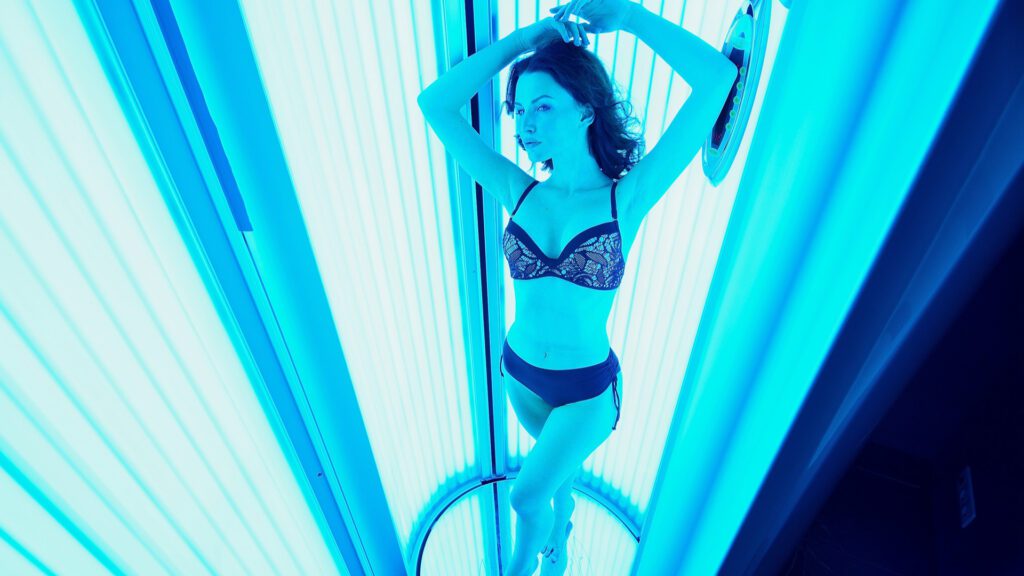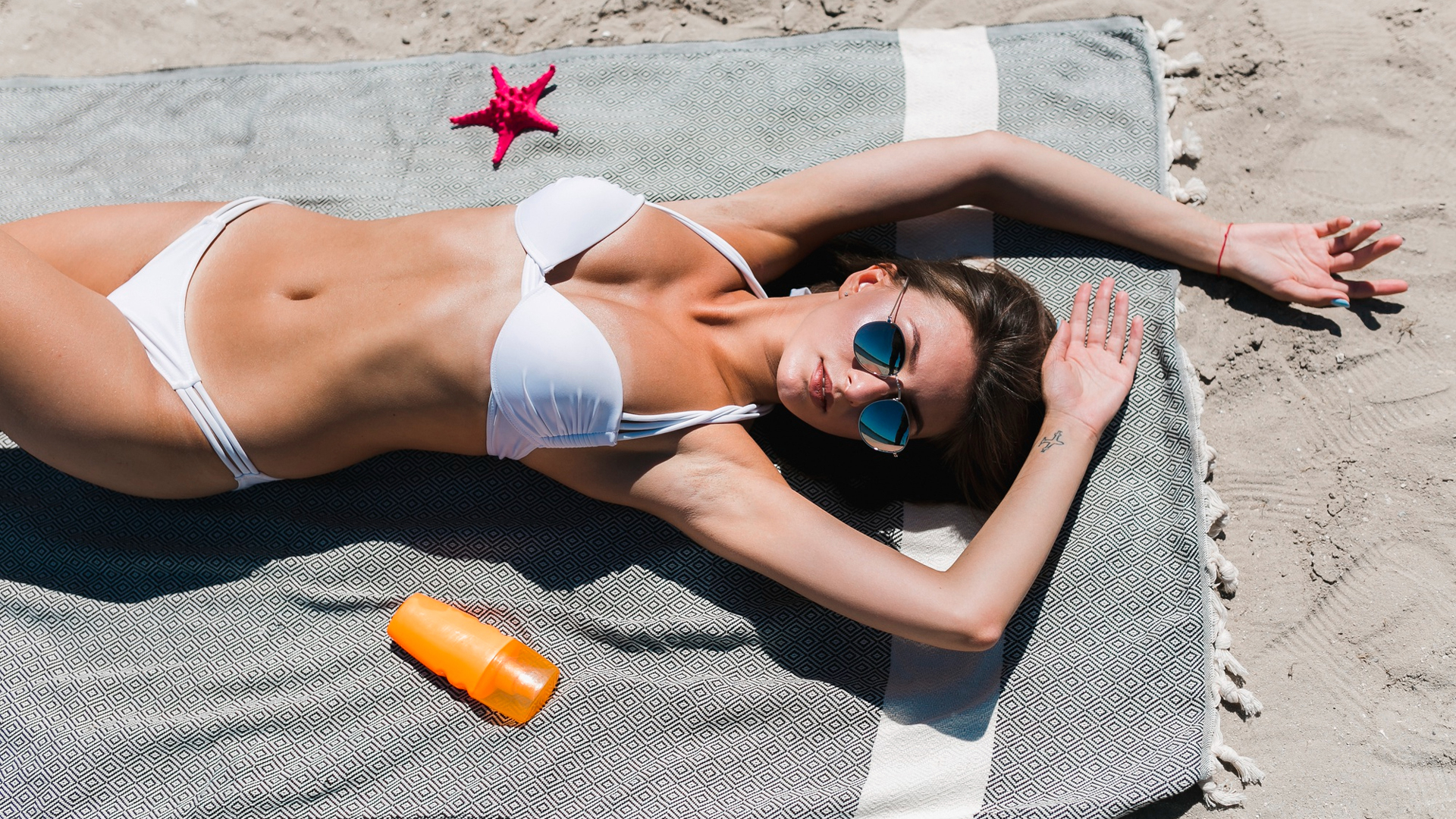Each skin type has recommended daily limits for UV exposure suited to its melanin content and ability to withstand sun exposure. In this article we go over a few things you should know before you start tanning.
How Hot Does It Have To Be To Tan?
It’s a very common misconception that tanning occurs because of high temperatures outside. The air temperature has absolutely no effect for person’s skin tanning. It’s the intensity of exposure to ultraviolet radiation (UV) rays that matters most.
Tanning happens even if the air temperature is extremely cold. People living in colder climates can get a tan or even a sunburn when the temperature is below the freezing point.
Factors That Affect A Person’s Tan
Tanning is influenced not only by temperature but also by several other factors including UV radiation, skin type, and the duration of sun exposure. More on them below:
Ultraviolet rays
UV radiation is strongest during the summer months and at midday, regardless of the temperature.
The UV radiation is generally highest between 10 am and 3 pm, during the summer on a cloudless day.
Skin type
Skin type also plays a crucial role; those with lighter skin may tan or burn more easily, while people with darker skin have more pigment melanin, which provides a natural protection against UV exposure.
Sun Exposure
The angle of the sun and direct sun exposure can also affect the intensity of the tan you get.
UV Index For Tanning

The UV index (UVI) refers to the strength of ultraviolet rays at any given time and place. In the early 90’s, Canadian scientists developed a UV index scale to help the public protect themselves from UV radiation.
The UVI values range from 0 to 11. The higher the value, the greater the risk for damaging the skin and eyes.
| Index | Requirement |
| 0-3 (Low) | No Protection Needed |
| 3-5 (Moderate) | Some Protection Required |
| 6,7 (High) | Protection Is Essential |
| 8-10 (Very High) | Extra Protection Is Needed |
| 11+ (Extreme) | Stay Inside |
How Often Should You Tan?
The National Institute for Health and Care Excellence (NICE) recommends at least 10 to 15 minutes of sun exposure (without sun protection) daily between March and October, from 11 am to 3 pm.
People with darker skin tones need to spend more time in the sun than this to achieve the same benefit.
Side Effects Of Excess Exposure To UV Radiation
Excess exposure to UV rays can cause sunburns and skin aging among other health risks. In extreme cases exposure to the sun’s UV rays can even lead to skin cancer – even when it’s not particularly hot outside, or it’s cloudy.
Safety Tips For Tanning
To get a tan safely, consider these tips:
- Use Sunscreen: Apply a broad-spectrum sunscreen with a SPF of at least 30 to protect your skin while allowing for gradual tanning.
- Limit Exposure: Start with shorter sun exposure times and gradually increase them to avoid sunburn.
- Stay Hydrated: Drink plenty of water to keep your skin hydrated, which can help maintain a healthy glow.
- Seek Shade: Take breaks in the shade to give your skin a rest from direct sunlight.
Ultimately, the key to tanning is not just the heat but managing your exposure to UV rays while protecting your skin.
Is Indoor Tanning Safer?

Yes, indoor tanning is safer than tanning outside. Most tanning equipment like sunbeds or tanning beds emits UVA rays because they are less likely to cause sunburn and premature aging than UVB rays. This, however, does not guarantee that skin cells will not burn and is still dangerous.
How To Tan Faster?
To tan faster, gradually increase session lengths, starting shorter to avoid sun damage.
Allowing some direct ultraviolet rays from the sun at peak hours helps tan faster without damage to the skin. Consistently apply sunscreen according to directions suitable for your skin pigmentation levels.
Closing Thoughts
Now you know how long to tan in the sun. Remember applying sunscreen every 2 hours will help you avoid the harmful ultraviolet radiation contained in the sunlight!

